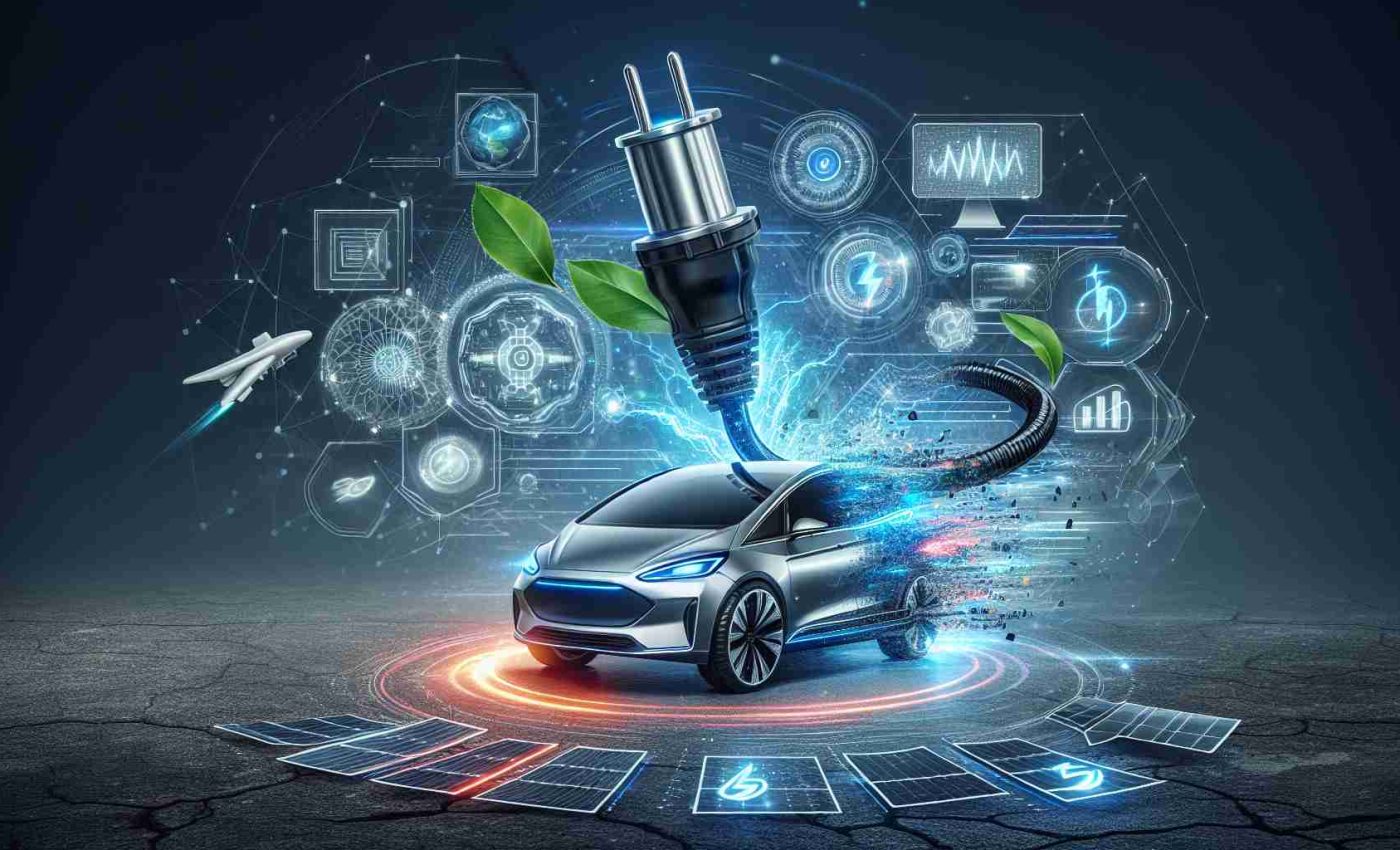Revolutionary Battery Technology Transformation
In a remarkable stride for the electric vehicle (EV) industry, a breakthrough in battery technology promises to escalate energy storage capacity by an astonishing ten times. This advancement emerges at a pivotal moment, aligning with the rapid expansion of the EV market and addressing the urgent need for enhanced energy solutions.
Researchers from Pohang University of Science & Technology (POSTECH) have unlocked a novel method aimed at improving battery performance. At the heart of battery functionality lies the anode, typically composed of graphite in lithium batteries. Yet, silicon, known for its superior energy storage potential, presents exciting new possibilities.
The POSTECH team, led by Professors Soojin Park and Youn Soo Kim, alongside Professor Jaegeon Ryu from Sogang University, has tackled the critical challenge of instability associated with silicon anodes. By engineering a specialized binding material, they have successfully mitigated the expansion issues that traditionally hindered the use of silicon in batteries, resulting in a lithium battery that boasts ten times the energy capacity of its graphite counterparts.
This groundbreaking work not only enhances electric vehicles but also broadens the horizon for renewable energy applications. Improved battery systems are vital for maximizing solar and wind energy, facilitating energy storage during peak production and ensuring reliable distribution during periods of low generation.
With these pioneering technological strides, the dream of more efficient, long-range electric vehicles is clearer than ever, marking a significant leap toward a sustainable energy future.
10X Energy Capacity Breakthrough: The Future of Electric Vehicles and Renewable Energy
In a remarkable stride for the electric vehicle (EV) industry, a breakthrough in battery technology is poised to transform energy storage capacity, potentially increasing it by an astonishing ten times. This advancement comes at a critical time, coinciding with the rapid expansion of the EV market and addressing the urgent need for higher quality energy solutions.
Key Features of the New Battery Technology
The innovative research, conducted by experts from Pohang University of Science & Technology (POSTECH), focuses on enhancing the performance of lithium batteries through the use of silicon-based anodes. Traditionally, lithium batteries use graphite, which limits the energy storage capacity. The team, led by Professors Soojin Park, Youn Soo Kim, and Jaegeon Ryu from Sogang University, has developed a novel method to stabilize silicon anodes, significantly advancing battery performance.
– Enhanced Energy Density: The new method achieves a tenfold increase in energy capacity compared to conventional graphite batteries.
– Improved Stability: The specialized binding material addresses the expansion issues that silicon traditionally faces, making it a viable option for future battery designs.
– Versatile Applications: Beyond electric vehicles, this technology can enhance energy storage solutions for renewable energy sources like solar and wind.
Pros and Cons of the New Technology
Pros:
– Higher Efficiency: Batteries can store more energy, resulting in longer operating ranges for electric vehicles.
– Better Sustainability: The use of renewable energy sources becomes more viable with efficient energy storage systems.
– Technological Innovation: Paves the way for advanced battery systems in various applications, including consumer electronics and large-scale energy storage.
Cons:
– Cost of Development: Before wide-scale adoption, the manufacturing costs associated with this new technology need to be addressed.
– Market Readiness: It may take time for the technology to penetrate the market fully and compete with established battery solutions.
Limitations and Considerations
– Manufacturing Challenges: Developing scalable manufacturing processes for the new silicon anode technology remains a complex challenge.
– Long-term Stability: Further research is necessary to ensure that these batteries maintain their performance over long periods and under various conditions.
Insights on Market Trends
As the demand for electric vehicles continues to surge, innovative battery technologies like this one are expected to play a crucial role in meeting industry requirements. Market analysts predict an increasing focus on sustainable solutions, bolstered by the green energy transition initiatives from many governments worldwide.
Pricing and Future Predictions
While specific pricing details for battery systems incorporating this technology remain speculative, the potential for economies of scale could reduce costs significantly in the coming years. As R&D progresses and production scales up, prices may become more competitive with current lithium-ion technologies, making electric vehicles more accessible to consumers.
Use Cases of the Technology
This breakthrough in battery technology could revolutionize various fields:
– Electric Vehicles: Extended range and reduced charging times.
– Renewable Energy Storage: Enhanced capabilities for storing energy generated by solar panels and wind turbines.
– Consumer Electronics: Longer-lasting power sources for laptops, smartphones, and other portable devices.
Conclusion
The advancements achieved by POSTECH’s research team signal a promising future for electric mobility and renewable energy applications. As we move toward a more sustainable energy landscape, innovations in battery technology like these will likely be pivotal.
For more updates on battery technology and the EV industry, visit POSTECH’s official website.







